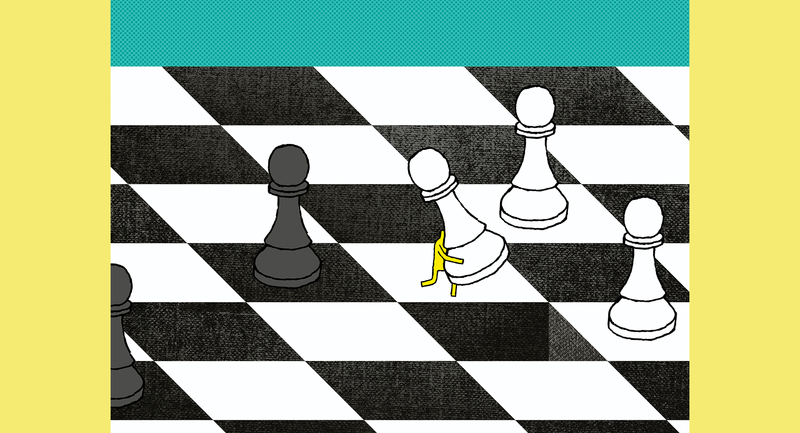You're reading this article, which means you have the ability to focus, store, and manipulate visual information; work toward a goal; create mental images; analyze; and more. These foundational skills enable you to take in textual information and put it to work in your life—without them, you couldn't read. Where do these skills come from? Point to your forehead! These are just six of the executive function skills that are largely controlled by the area of your brain known as the prefrontal cortex. This powerful and fascinating part of the brain is what sets humans apart from other life forms, allowing us to engage in higher-order thinking and reasoning. It manages working memory, mental flexibility, planning, reasoning, problem solving, inhibitory control, and self-awareness—many of the skills we need in order to succeed in learning.
Success Hinges on Executive Function
Suppose you come home one day with your hands filled; you push open the door with your foot and it hits the wall, punching a hole in the drywall. Now you have to spackle the drywall. You find printed directions for how to spackle a wall, and video demonstrations, online. But now suppose you set out to spackle that wall and you lack the executive functioning skills to focus, follow multiple steps, work toward a goal, persist in a task, or catch and correct errors. Clearly, that hole in the wall will not get fixed correctly. Similarly, schools may purchase new programs or focus on conducting better lessons as ways to raise student achievement. But without executive function skills, students will not learn from those lessons.
The first scientist to map the prefrontal cortex did so in the 1970s, so our knowledge of this part of the brain and executive function skills is relatively new. This may be why executive function is the most overlooked skillset in schools today. If anything, it is discussed among special education circles; however, these skills are vital for each and every student. Let's look at how the prefrontal cortex and executive function skills develop, what can go wrong, and what teachers can do to strengthen them.
Development and Delays in the Prefrontal Cortex
The prefrontal cortex continues to grow from birth with a significant growth spurt between the ages of 4 and 5 and another during puberty. It then continues a slower but steady growth pattern and does not fully mature until the age of about 25. That explains why so many high school and college-age students succumb to peer pressure and make seemingly poor decisions about crucial life topics such as drugs, drinking, and sexual activity. The part of their brain that manages reasoning skills is not yet fully developed.
Growth of the prefrontal cortex can be slowed by chronic stress. Students who come from homes where they are faced with the challenges of poverty, protracted custody battles, abuse, and other chronic stressors may demonstrate a lack of executive function skills. Sadly, these students are often categorized as lazy or unwilling, with teachers assuming they do not have what it takes to succeed. When we encounter students with physical disabilities, such as a broken arm, we accept the need for accommodations.
Students who lack executive function also have a physical disability; their prefrontal cortex is not developing at the expected rate of growth. A teacher once said that if a student could not write because of a broken arm, she would never think of saying, "just try harder." Now she accepts that if a student has difficulty focusing, she will not say, "just try harder." The good news is that the brain, and the prefrontal cortex in particular, can recover and grow. This means that schools can take deliberate steps to advance students' executive function and growth of the prefrontal cortex.
Building Executive Function Skills
You can strengthen students' executive function skills through activities, structures, and facilitation. Lower-level executive function skills, such as concentration, identifying same and different, and remembering details can be addressed through specific activities that allow students to practice those skills. However, most executive function skills are best addressed through designing a learning environment that promotes a culture of executive function. This begins with mapping the 40 key executive function skills to these increasingly complex life skills: conscious control, engagement, collaboration, empowerment, efficacy, and leadership. See Table 1 for the executive function skills that are required at each level; read the table from the bottom up.
Levels increase in complexity from the bottom up.
Table 1. Executive Function Skills Mapped to Life Skills
Table 1. Executive Function Skills Mapped to Life Skills
Leadership
- All the executive function skills below
Efficacy
- Being creative
- Working towards a goal
- Organizing actions and thoughts
- Considering future consequences in light of current action
- Making hypotheses, deductions, and inferences
- Applying former approaches to new situations Defining a problem
- Analyzing
- Creating mental images
- Generating possible solutions
- Anticipating
- Predicting outcomes
- Evaluating
Empowerment
- Catching and correcting errors
- Setting goals
- Managing time
- Self-assessing
- Monitoring performance
- Reflecting on goals
Collaboration
- Seeing multiple sides to a situation
- Being open to others' points of view
- Maintaining social appropriateness
- Overcoming temptation
Engagement
- Identifying same and different
- Following multiple steps
- Identifying cause-and-effect relationships
- Categorizing information
- Changing perspective
- Thinking about multiple concepts simultaneously
- Initiating a task
- Persisting in a task
Conscious Control
- Storing and manipulating visual and verbal information
- Remembering details
- Holding on to information while considering other information
- Shifting focus from one event to another
- Attending to a person or activity
- Focusing
- Concentrating
- Thinking before acting
- Managing conflicting thoughts
Student-Driven Classrooms Support Executive Function
Instead of attempting to address a single skill with lessons and activities, seek to build a classroom environment where students apply these increasingly complex life skills. I have found that problem-based learning, student-friendly assessment tools, choice, and self-service classroom areas are essential to student-driven classrooms.
Problem-based learning provides students with an authentic reason to dive into curricular content. Instead of teaching students about the food chain, create a need to learn about the food chain by addressing the challenge of a local invasive species. In Florida, pythons were introduced where they have no natural predators and are multiplying rapidly and eating their way through the local species of rabbits, panthers, and even alligators. What solutions might your students offer? A problem like this covers a lot of content across the disciplines; plus, look at the list of executive function skills in Table 1 and check off all that would be exercised in researching this topic, developing a solution, and advocating for it.
Rubrics presented at the launch of a unit allow students to continually apply executive function skills like self-assessment, goal setting, and monitoring their own progress. "Great Student Rubrics" allow students to self-assess, set goals, and monitor progress related to work habits and social and emotional learning. When teachers have classroom rules, the student merely sees them as a yes-or-no assessment. When students take responsibility for growing their work habits, they exercise executive function skills. See the primary-level Great Student Rubric (reprinted from www.myqportal.com) in Figure 2.
Student-driven differentiation using activity lists or menus allows students to make choices about how they learn best. Consider the activity list in Figure 1. In this example, high school students are weighing in on the mathematical fairness of the March Madness brackets and proposing changes to the process. Notice that the teacher lays out differentiated options for building content skills. Students decide on modalities, such as text, video, learning centers, or teacher lessons; they decide whether to work individually, in pairs, or in groups. Again, referencing Table 1, consider how many executive function skills will be exercised when students are empowered to manage their own learning path.
Figure 1: Excerpt of March Madness Week One Activity List for Mathematics
Source: From MyQPortal by EdQuiddity Inc. Copyright 2019 by IDE Corp. and EdQuiddity Inc. Excerpted with permission.
Resource areas provide students with the materials they need in the learning process. When teachers hand out materials to students, students need to possess only a few executive function skills to focus on the resource and take it. Alternatively, when students have to decide which materials they need, walk over to an area or access a digital area, and find the resource they need, they exercise a number of executive function skills. Similarly, help boards allow students to alert the teacher that they need help. When students just raise their hands or call out a teacher's name, they exercise few executive function skills. When students are taught to first reread directions, then look to see if they can get their questions answered at the resource area, then through their team before putting their name on the help board, they exercise myriad executive function skills.
Figure 2: "Great Student" Rubric Example for Primary Grades
Source: From MyQPortal by EdQuiddity Inc. Copyright 2019 by IDE Corp. and EdQuiddity Inc. Used with permission.
Teacher Facilitation
The last aspect of strengthening executive function lies in the words of the teacher while facilitating the learning process. Asking students comprehension questions ensures students are learning the content; following up with questions that begin with "What if …?" and "What else …" exercise executive function skills. Teacher facilitation should take into account the executive function skills of cause-and-effect relationships, catching and correcting errors, reflecting on goals, and more.
Getting Started
Students can't start day one of the school year taking full responsibility for their own learning. Teachers must provide students with direction and protocols for using the various structures of the classroom. Start small and gradually release more responsibility to students. Keep Table 1 at hand to continually assess how you are creating opportunities for students to practice executive function. The energy spent setting up a more student-driven classroom environment will pay off in increased executive function, which will support increased achievement.







